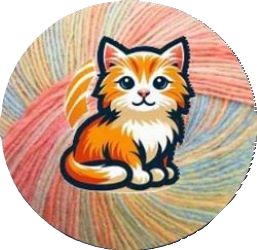 Hi Knit Sew Quilt knitters,
Hi Knit Sew Quilt knitters, 
Measuring actual and finished sizes, what is 'ease', and how do I check my sizes
The difference between actual chest measurement and finished garment measurement is called 'ease' and applies to garments from baby to adult sizes.
- For children the finished garment chest measurement is normally 2 inches (2” or 5cm) bigger than the actual chest size or approximate age.
- For adult garments the amount of ease varies from 0" for the fifties snug sweater look, to 2" (5cm) for classic fit, and 4” (10cm) and upwards depending on the garment look and style.
- A garment with 2" (5cm) of ease is close fitting over e.g. a t-shirt. 4" of ease is loose fitting and would be good over 2 to 3 layers of other clothing e.g singlet & warm winter skivvy.
- For every extra layer of clothing under the knitted garment you would allow another 2" (5cm) of ease, e.g. a winter coat over a jumper and 2 other layers would often be 6" (15cm) to 10" (25cm) bigger than the actual chest measurement.
Some modern teen and adult knitting patterns are intentionally 'over-sized' allowing for the finished garment to be 10" (25cm), or even more, than the actual bust/chest measurement. This is a fashion decision, and if you want the knitted garment to be a closer fit you can often knit the smallest size to get the finish you are after.
How to get pattern size and ease correct
Measure the bust/chest of the person you are knitting for, over 1 layer of clothing at most e.g. a bra or singlet - this is usually the "to fit", “to fit underarm” or "actual chest measurement" on the pattern.
OR measure the distance across an existing garment below the armholes (front or back) if you want your knitting to be the same finished size - this is usually the "actual width", "actual size" or "finished bust/chest" measurement on the pattern.
Now read your knitting pattern size chart carefully so you understand what size person the garment is going to fit and how big the finished garment is going to be.
How do I check my knitting?
Even if you knit a tension square and check it (and we often don't do that!) - you should also pause your knitting in the middle of a row when you are about 6" (15cm) up the back of the garment - which is the piece you would normally knit first.
Make sure the knitting is relaxed across the needles and measure across the knitted piece edge-to-edge 1 to 2 inches (3cm to 6cm) below the needles. Compare that to either of the finished garment size according to the pattern, OR the actual measurement from an the existing garment you want the finished width to be like (or both to be sure!)
Done that… what next?
If your knitting is too wide and you think your knitting is too loose
- you could try again using a 1/2 or full-size smaller knitting needle e.g. a 3.5mm instead of a 4mm, or a 6mm instead of a 7mm.
If it's too wide but you like the knitted tension
- you could try knitting a smaller size from the pattern.
If your knitting is too narrow and you think your knitting is too tight
- you could try again using a 1/2 or full-size bigger knitting needle e.g. a 4.5mm instead of a 4mm, or a 7mm instead of a 6mm.
If it's too narrow but you like the knitted tension
- you could try knitting a larger size from the pattern.
Before you go...
Don’t forget also to check the arm length and back length when knitting an adult garment. This is less important on a baby or child’s garment because there is less variation of arm and back length to chest size.
You can phone, email or contact us if you want help or advice on this so your knitting always comes out the size you want.
If you have a topic you want covered or a tip of your own to share, please contact me.
Happy knitting.
Fern

